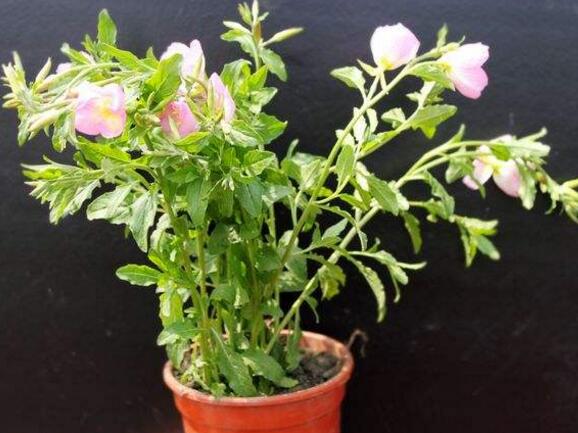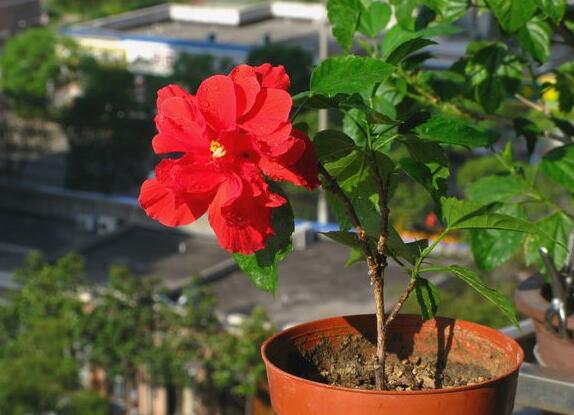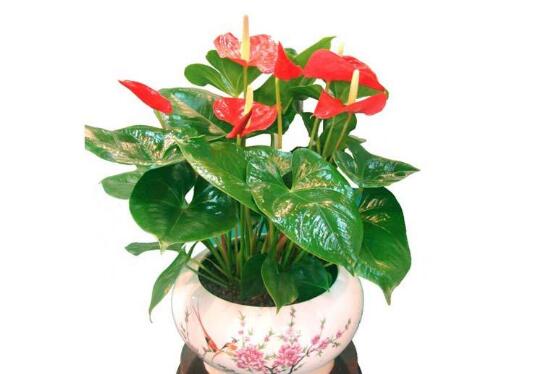How to sow evening primrose and the propagation method / sowing / cutting of evening primrose
Evening primrose is a kind of plant with high medicinal value, which has a good effect on many diseases, so many people want to keep one at home. How to sow Evening Primrose, and how many propagation methods are there? Next, the editor will take you to learn about it.
1. How to sow evening primrose / soil disinfection

1. Sowing time
When sowing and propagating evening primrose, it is more exquisite to choose sowing. The most suitable environment for the growth of evening primrose is in spring and autumn, so it is best to choose these two seasons when sowing, which will be more beneficial to the growth of evening primrose.
two。 Soil selection
When sowing evening primrose, the first part should choose the soil first. The requirement of evening primrose on soil is not too high, so it is OK to choose loose soil with good drainage. And after choosing a good soil, there is another thing to pay attention to, that is, disinfect the soil so as not to carry germs in the soil.
3. Treatment of seeds
How to sow evening primrose, the treatment of seeds is a key step. The seeds of evening primrose are not sown directly. Before choosing to sow, it is best to soak the seeds in warm water for 3-9 hours, so that the seeds will swell up due to water absorption. Sowing at this time will greatly improve the germination rate of the seeds.
4. Sowing method
Before sowing, you can sow the seeds directly on the surface of the soil, then cover it with about one centimeter of soil, and then put the flowerpot into the water, the depth of the water can be controlled between 1/2 and 2/3 of the height of the flowerpot, and then let the water seep up slowly.
2. Propagation methods / cuttings of evening primrose
The propagation methods of evening primrose can be divided into two kinds, which are sowing propagation and cutting propagation. In the above, the editor has introduced the methods of sowing and reproduction, and then the editor will take you to know about the methods of cutting propagation and matters needing attention.
1. Preparation in advance
When choosing cuttings for Evening Primrose, it is best to choose cuttings with relatively strong and good situation, so that the survival rate will be higher, and we can choose humus soil with better drainage, so that the preliminary preparation work is basically completed.
two。 Cutting method
When cutting evening primrose, it is best to control the ambient temperature between 18 °C and 25 °C, which is the most suitable temperature for the growth of evening primrose. When cutting, remember to insert the cuttings into the soil by oblique cutting, then water them thoroughly, and then wait for them to sprout.
As for how to sow evening primrose, after reading the detailed introduction above, I believe you already know the method. In fact, as long as you breed evening primrose according to the above method, the survival rate is still very high. This is the end of the introduction on the breeding methods of evening primrose. I hope this article can bring some help to everyone's breeding process.
Sowing and cutting Management of Evening Primrose
Many friends know the function of evening primrose very well, and some flower friends will plant it at home or in the courtyard. But Evening Primrose is an annual to biennial plant with a relatively short life span, so we can reproduce in a variety of ways. Evening primrose is often propagated by sowing and cutting.
Evening primrose
First, sowing: autumn sowing is often carried out after mid-late September: the best way to disinfect the substrate used for sowing is to stir-fry it in a pan so that any diseases and insects can be scalded to death. Soak the seeds in warm hot water (the temperature is about the same as facial wash) for 3 to 10 hours until the seeds absorb water and expand. For common seeds that germinate easily, this work does not have to be done. For tiny seeds that are difficult to pick up with hands or other tools, wet one end of the toothpick with water, stick the seeds one by one on the surface of the matrix, cover the substrate 1 cm thick, and then put the seeding pot into the water. The depth of the water is 1 stroke 2 feet 2 tap 3 of the height of the flowerpot, allowing the water to soak up slowly. For larger seeds that can be picked up by hand or other tools, put the seeds directly into the substrate and order them at a distance of 3 × 3 cm. After sowing, the substrate was covered, and the thickness of the cover was 2-3 times that of the seed. After sowing, the sowing matrix can be wet with sprayers and fine-hole showers, and then when the pot soil is slightly dry, we should still pay attention to watering so as not to wash the seeds up; management after sowing: after sowing in autumn, when you encounter cold waves and low temperatures, you can wrap the flowerpot with plastic film to keep warm and humid. After the seedlings are unearthed, the film should be opened in time, and the seedlings should be exposed to the sun before 9:30 every morning or after 3:30 in the afternoon, otherwise the seedlings will grow very weakly; after most of the seeds come out, you need to plant seedlings properly: pull out the diseased and unhealthy seedlings so that there is some space between the seedlings left behind. When most of the seedlings have three or more leaves, they can be transplanted into the pot.
Second, cutting propagation: the branches used for cutting are called cuttings. Usually combined with the heart-picking work, the sturdy, disease-free top tip is taken as a cuttage, and the top tip is cut directly. Attention should be paid to the following management after cutting:
1. Temperature: the optimum temperature for rooting of cuttings is 18 ℃ ~ 25 ℃, which is lower than 18 ℃, and it is difficult and slow for cuttings to take root. When the temperature is higher than 25 ℃, the cuttings are easy to be infected by bacteria and rot, and the higher the temperature is, the greater the proportion of rot is. When there is a low temperature after cutting, the heat preservation measure is mainly to wrap the flowerpot or container used for cutting with thin film; when the temperature is too high after cutting, the cooling measure is mainly to shade the cuttings, to cover 50-80% of the sun, and at the same time, spray the cuttings 3-5 times a day, with more times of spraying when the temperature is higher in sunny days, lower temperatures and higher temperatures in rainy days, but less or no spraying times.
2. Humidity: the relative humidity of the air must be kept at 75-85% after cutting. You can increase the humidity by spraying the cuttings 1-3 times a day, the higher the temperature in sunny days, the more times you spray, and the lower the temperature in cloudy and rainy days, the less or no spraying. But with excessive spraying, cuttings are easy to be infected by bacteria and rot, because many kinds of bacteria exist in the water.
3. Light: cutting propagation is inseparable from sunlight, but the stronger the light is, the higher the temperature in the cuttings is, the stronger the transpiration of cuttings is, and the more water is consumed, which is not conducive to the survival of cuttings. Therefore, after cutting, the sun must be shaded by 50% to 80%, and then gradually removed after the root system grows: remove the sunscreen at 4:00 every sunny day, and cover it before 9:00 the next day.
The Propagation method of Evening Primrose
Evening primrose flowers are fragrant and beautiful and are usually cultivated and ornamental. Evening Primrose blossoms in the evening and fades at dawn, and it is not easy to appreciate it. What is the evening primrose flower language? How do you reproduce? Next, take a look at the evening primrose language and the breeding methods of evening primrose with Xiaoqi.
What is the language of Evening Primrose
The flower language of evening primrose: silent love, unruly heart
There is a saying that when women present evening primrose to men, it represents' silent love; there is also a common saying that evening primrose represents an unyielding heart and a free heart; others say that the flower language of evening primrose is the magic of 'beauty after bathing'.
Evening primrose, also known as Jian Xiao grass, mountain sesame, wild sesame, is a plant of the family Saliuriaceae and Evening Primrose. Strong adaptability, acid and drought resistance, lax requirements on the soil, generally neutral, slightly alkaline or slightly acidic soil, good drainage, loose soil can grow, it is easy to get disease in the wet soil. There are annual plants in the north and biennial plants in the south of the Huaihe River. It is the most important nutritional drug discovered in this century. It can treat a variety of diseases, regulate blood lipids, and has a significant effect on coronary artery infarction, atherosclerosis and cerebral thrombosis caused by high cholesterol and hyperlipidemia.
2.Propagation methods of evening primrose
1. Sowing and propagation: evening primrose can be sowed in both spring and autumn, and the autumn sowing period is from the middle of October to before freezing. Sowing in spring in the north, sowing and raising seedlings in autumn or spring all over the south of the Huaihe River. When sowing, the soil should be raked fine and flat, and the seeds should be sowed on the border surface, gently raked with a rake and covered with a thin layer of soil. The seeds are small and the soil cannot be covered thick, otherwise the germination and growth of the seeds will be affected. The soil should be kept moist after the seeds are sown. About 10-15 days after sowing, the seeds can germinate seedlings.
2. Cuttage propagation: the top tip of evening primrose cuttings is usually used as cuttings, the optimum temperature for rooting is 18 ℃ ~ 25 ℃, which is lower than 18 ℃, it is difficult and slow for cuttings to take root, and when the cuttings are higher than 25 ℃, the cuttings are easy to be infected by bacteria and rot. The relative humidity of the air must be kept at 750.85% after cutting. You can increase the humidity by spraying the cuttings 1-3 times a day, the higher the temperature in sunny days, the more times you spray, and the lower the temperature in cloudy and rainy days, the less or no spraying. But with excessive spraying, cuttings are easy to be infected by germs and rot.
The above is the evening primrose flower language and the evening primrose breeding method introduction, evening primrose silent love, unruly heart is the same as you? I hope the above content is helpful to all of you.
- Prev

How to reproduce hibiscus flowers, hibiscus flower cutting method/operation simple survival rate 100%
Hibiscus flower, an ornamental plant, it not only flowers big, but also red color, very likable, many flower friends potted at home. However, a pot of hibiscus flowers is too monotonous, it is time to breed a few pots together to raise, then how to breed hibiscus flowers? According to inquiries, there are two main ways to reproduce hibiscus flowers.
- Next

How to raise the flaming crane flower, the breeding method and matters needing attention / avoid direct sunlight
Crane flower is a kind of plant native to tropical South America, which was introduced to China. Nowadays, it can be seen in many parts of our country, and there are many people who raise it in our country. However, if we want to raise it well, we need to pay attention to many places. About how to raise crane flowers
Related
- Fuxing push coffee new agricultural production and marketing class: lack of small-scale processing plants
- Jujube rice field leisure farm deep ploughing Yilan for five years to create a space for organic food and play
- Nongyu Farm-A trial of organic papaya for brave women with advanced technology
- Four points for attention in the prevention and control of diseases and insect pests of edible fungi
- How to add nutrient solution to Edible Fungi
- Is there any good way to control edible fungus mites?
- Open Inoculation Technology of Edible Fungi
- Is there any clever way to use fertilizer for edible fungus in winter?
- What agents are used to kill the pathogens of edible fungi in the mushroom shed?
- Rapid drying of Edible Fungi

